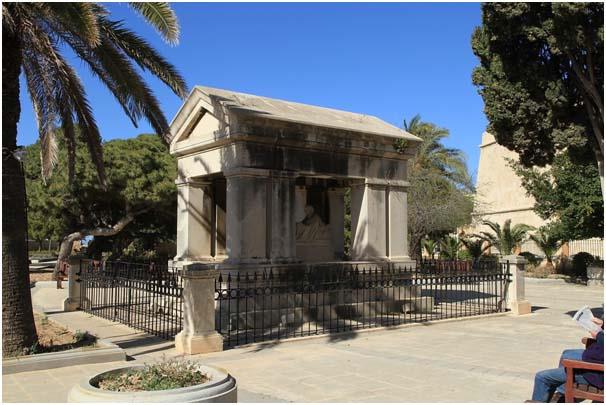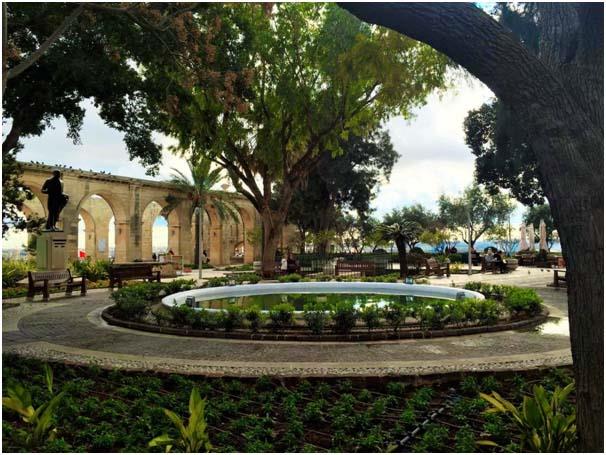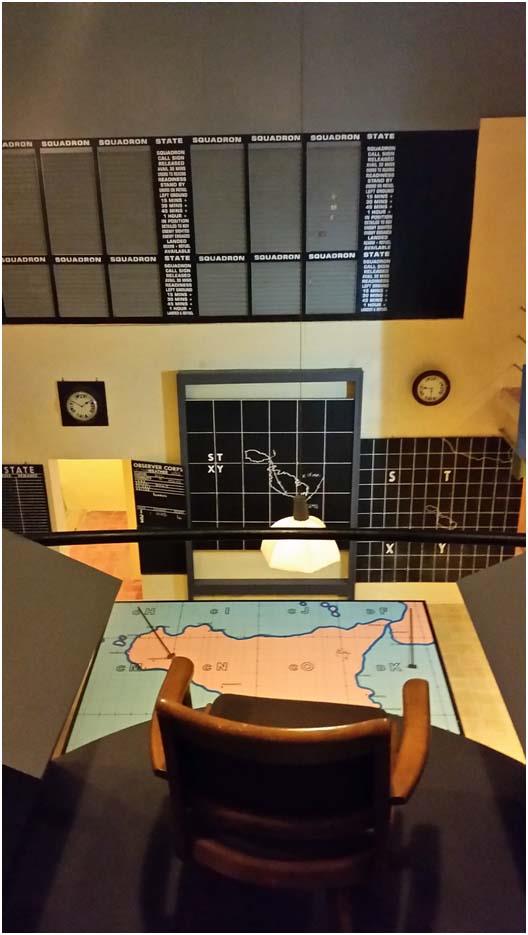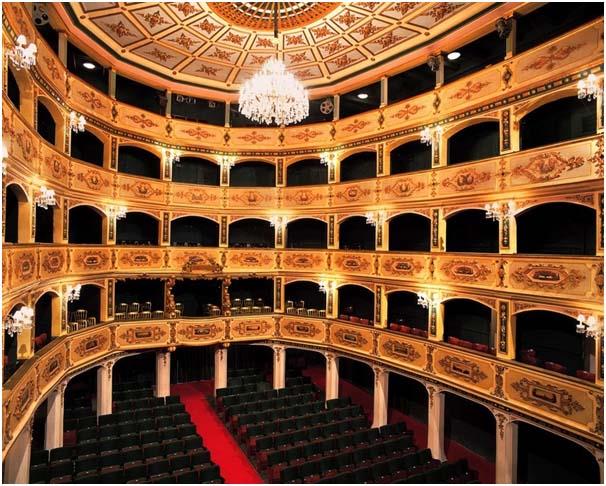As a tourist guide, probably the most asked question I get after our daily walking tour in Valletta is: “What else do you recommend to see in this city?”
Most of the time, tourists would only have a few days in Malta and with visits to other parts of the island already planned for the following days, they would only have the rest of that afternoon in our capital. This is what makes answering this question difficult because, in my opinion, one could easily spend a few days just in Valletta itself. But I’ve decided to come up with a list of my 10 favourite places which definitely should not be missed.

Hastings Garden
Hastings Garden is the largest of the public gardens in Valletta, located only a stone’s throw away from the main entrance to the city. Located on top of St John and St Michael bastions, which originally formed part of Valletta’s imposing land front defences, it not surprisingly offers fantastic views of the Tritons Fountain area on one side and Marsamxett Harbour on the other. Remarkably, despite its charm, this garden is usually very peaceful, unlike the crowded Upper Barrakka.
An interesting feature is the large marble sarcophagus located in the central part of the garden that is the last resting place of the 1st Marquess of Hastings, who died at sea in 1826, two years after becoming Governor of Malta. According to his wishes, his wife had his body returned to Valletta for burial, after cutting off and preserving his right hand, which was then eventually interred, clasped with hers, when she herself died years later!

Our Lady of Victory church
Known to have been Valletta’s first church, this is believed to be the site where Grand Master Jean de Valette himself laid down the city’s foundation stone on 28 March 1566.
De Valette was in fact buried in the crypt of this same church when he died two years later, as was his successor, Pietro del Monte, although both were eventually reinterred in the conventual church of the Order when that building was completed.
Although the church suffered some damage during World War Two, it has been lovingly restored by Din l-Art Ħelwa and a particular highlight is the set of beautiful frescoes that cover the whole ceiling. A work by the Maltese artist Alessio Erardi, they depict episodes from the life of the Virgin Mary, to whom the church is dedicated.

Upper Barrakka Gardens
The Upper Barrakka is an absolute must-see when visiting Valletta. Although it can be a bit crowded and it is usually very difficult to find an unoccupied bench here, the views from what is the highest part of the city, are absolutely spectacular. Some people like to sit down for a drink at the café on one side of the garden, but most just head straight to the viewing balcony, from where the entire Grand Harbour, with its sheltered creeks and historic fortifications, can be admired and photographed.
This is also the best place to see the twice-daily firings of the time gun from the Saluting Battery, a centuries-old tradition that is kept alive by reenactors in period costume. The Upper Barrakka lift is also the quickest and easiest way to reach the nearby Valletta Waterfront.

Lascaris War Rooms
The Lascaris War Rooms are located directly underneath the Upper Barrakka, in what was originally a top-secret underground complex that housed Britain’s War HQ in Malta during World War Two. From here, the defence of the island, as well as the Allied offensive operations in the Mediterranean, were coordinated.
The work carried out in these underground chambers was extremely vital and included directing British fighters to intercept approaching enemy bombers. In 1943, the War Rooms became the advanced Allied HQ for General Eisenhower and his Supreme Commanders for the Allied invasion of Sicily. After the war, it became the HQ of the British Mediterranean Fleet, while in 1967 it was taken over by NATO and used to monitor the movement of Soviet submarines in the Mediterranean, a role it retained until its closure in 1977.
Today, the site is managed by Fondazzjoni Wirt Artna that have not only painstakingly restored it, but also opened this fascinating historical complex to visitors.

St John’s Co-Cathedral
Do not be fooled by the relatively simple exterior of this building; it is simply the highlight of Valletta, the one site you cannot miss out on. This is so much more than a church; it is also a masterpiece of Baroque art.
Commissioned by Grand Master Jean de la Cassiere in 1572 to serve as the conventual church of the Order of St John, it was to undergo a complete redecoration of its interior in the rich Baroque style during the course of the 17th century. The precious works were financed by the Knights themselves.
Beautiful art is everywhere you look, from the Mattia Preti frescoes that cover the whole ceiling, to the inlaid marble tombstones that cover the entire floor. The highlight, of course, is the opportunity to gaze upon The Beheading of St John by the great Caravaggio.

Manoel Theatre
Another edifice with an austere facade that completely belies its grand interior is the famous Manoel Theatre. The Teatro Pubblico, as it was originally known, was commissioned and its construction personally funded by Grand Master Antonio Manoel de Vilhena in 1731, to serve as a public theatre “for the honest recreation of the people”.
For many years it was extremely successful, before falling into disuse in the latter half of the 19th century, after the construction of the Royal Opera House. However, following that building’s destruction by bombing during World War Two, the Manoel Theatre flourished again and is today one of Valletta’s gems.
Reputed to be Europe's third-oldest working theatre, it is also the national theatre of Malta and the home of the Malta Philharmonic Orchestra. Whether to enjoy one of the numerous productions or at least to take a tour around the place, the Manoel Theatre should definitely be on your list.

Piazza Regina
Well, the official name is Republic Square, but practically everyone in Malta still refers to it as Piazza Regina, thanks to the imposing statue of Queen Victoria that stands at its centre.
The square is not only picturesque, but it is also located right at the heart of the city, overlooking the main street of Valletta. It is also home to probably the most well-known café in Malta, Caffe Cordina, which has been here since 1944, although the family business was established as far back as 1837. The inside of the shop is decorated with works by the renowned Maltese painter Giuseppe Calì, but during the hot summer months, most people prefer to sit outside, enjoying a coffee while observing everyone going around their business.
At the back of the square is the beautiful neo-classical facade of the Bibliotheca Nazionale. Completed in 1796, the National Library is a real treasure trove of valuable archives and documents that shed light on Malta’s colourful past.

Fort St Elmo
Fort St Elmo is the oldest building in Valletta since it was actually built 14 years before the rest of the city, into which it was later incorporated. Standing right at the tip of the Valletta peninsula, for centuries it protected the entrances to the Grand Harbour and Marsamxett Harbour.
The fort played a major role during the Great Siege of 1565 when despite the bravery and sacrifice of its vastly outnumbered defenders, it became the only fort to fall to the Ottomans after they had managed to isolate it, albeit only after 28 long days of brutal fighting which sapped the enemy’s energy and morale.
Fort St Elmo retained its military role until 1972 and today quite aptly hosts the National War Museum, which charts Malta’s involvement in regional conflicts since the arrival of the Knights, and therefore highlights the island’s strategic role and the events that helped shape it into what it is today.

Lower Barrakka Gardens
Just like its counterpart, the Upper Barrakka, the Lower Barrakka is one of the most spectacular gardens in Valletta, perched on the bastions overlooking the entrance to the Grand Harbour and commanding a superb view.
Although slightly more difficult to find than the Upper Barrakka Gardens, it is worth the effort. Among the trees, right at the centre of the garden, lies the grand neoclassical monument to Sir Alexander Ball, resembling an ancient Greek temple. Directly opposite the viewing balcony is the Siege Bell Memorial. Inaugurated in 1992 to commemorate the 50th anniversary of the award of the George Cross to Malta, it honours the over 9,000 servicemen, merchant seamen and civilians who lost their lives in the World War Two Battle for Malta.
This is a fantastic place to sit down on a bench and enjoy seeing the myriad boats and cruise ships coming in and out of the Grand Harbour through the gap in the breakwater.

Mediterranean Conference Centre
The last entry on the list is not a tourist attraction as such, but is certainly worth visiting if the opportunity arises; numerous theatrical performances, as well as exhibitions and conventions, are held here throughout the year.
The MCC is one of Valletta’s most remarkable structures, originally built by the Knights of St John in 1574 to house what was at the time one of the foremost hospitals in Europe. Large enough to accommodate up to 900 patients, one of its most impressive features is the so-called “Great Ward”, which at the time of construction was the longest hospital ward in Europe. The School of Anatomy and Surgery was added by Grand Master Nicholas Cottoner in 1676.
The hospital was later used by both the French and British military, before being badly damaged during World War Two. After years of neglect, it was finally restored, providing a space where local and international events can be held within a complex truly steeped in history.
Most of these sites also form part of the primary and secondary school history syllabus. Due to the importance of these locations and educational relevance, Colour my travel is organising a series of discounted educational kids’ tours. More information is available on https://www.colourmytravel.com/educational-kids-tours
You can follow Colour my travel on Instagram, Facebook and Twitter